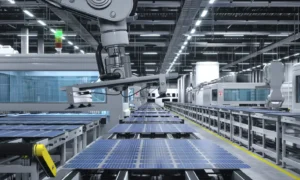The electronics industry has become an indispensable part of our lives, impacting everything from communication to entertainment, and even healthcare. However, this exponential growth in the electronic sector has raised concerns about its environmental impact, from resource extraction to electronic waste disposal. It’s imperative to understand the concept of a sustainable value chain in electronics, which extends from the initial design phase to responsible disposal. This article delves into the various facets of creating a sustainable electronics value chain and the importance of transitioning towards greener practices.
Introduction
Designing for Sustainability
The journey towards a sustainable value chain in electronics begins at the design stage. Manufacturers and engineers must focus on creating products that are not only innovative but also environmentally friendly. Key aspects of sustainable design include:
Material Selection:
Choosing eco-friendly materials can significantly reduce the carbon footprint of electronic products. Materials like bioplastics and recycled metals are gaining popularity due to their reduced environmental impact.
Energy Efficiency:
Designing electronic devices that consume less energy during operation can contribute to long-term sustainability. Energy-efficient components and software optimization are essential in this regard.
Modularity and Repairability:
Creating products that are easy to repair and upgrade extends their lifespan, reducing the need for frequent replacements and e-waste generation.
End-of-Life Considerations:
Considering the disposal of electronic products right from the design phase allows for the development of products that are easier to recycle and dispose of responsibly.
Sourcing Sustainable Materials
To build a sustainable value chain, the electronics industry must transition towards sourcing materials that are ethically and environmentally sound. This includes:
Recycled Materials:
The use of recycled metals and plastics not only reduces the demand for virgin resources but also decreases the environmental impact of mining and extraction.
Conflict-Free Minerals:
Electronics manufacturers should ensure that the minerals they use, such as coltan and cobalt, are not sourced from conflict zones or areas with poor labor practices.
Renewable Energy:
Transitioning to renewable energy sources for manufacturing processes can significantly reduce the carbon footprint of the electronics supply chain.
Efficient Manufacturing Processes
Efficiency in manufacturing processes is a crucial part of creating a sustainable value chain in electronics. Implementing lean manufacturing principles and reducing waste can lead to a more eco-friendly production process.
Lean Manufacturing:
The concept of lean manufacturing focuses on minimizing waste, which, in turn, reduces resource consumption and environmental impact.
Just-In-Time Production:
This approach minimizes excess inventory and overproduction, which can be detrimental to both the environment and the bottom line.
Waste Management:
Proper waste management practices within the manufacturing process can ensure that electronic waste is minimized and handled responsibly.
Supply Chain Optimization
The electronics value chain involves a complex network of suppliers, manufacturers, distributors, and retailers. Optimizing this network can significantly enhance sustainability.
Local Sourcing:
Reducing the distance between suppliers and manufacturers can minimize the environmental impact of transportation.
Supplier Audits:
Regular audits of suppliers can ensure that ethical and environmental standards are met throughout the supply chain.
Collaborative Partnerships:
Collaborating with partners who share the same sustainability goals can lead to innovations and better environmental practices.
Distribution and Packaging
The distribution phase of the electronics value chain is another critical area where sustainability practices can be implemented.
Eco-Friendly Packaging:
Moreover, using minimal and recyclable packaging materials can significantly reduce the environmental impact of electronic products. Additionally, this eco-friendly approach not only benefits the environment but also promotes sustainability. Furthermore, companies should consider adopting these practices to contribute to a greener future
Efficient Transportation:
Furthermore, opting for greener transportation methods and logistics can significantly reduce carbon emissions during the distribution process. In addition, this environmentally conscious choice not only lowers the ecological impact but also promotes sustainable practices. Moreover, companies that prioritize green transportation contribute significantly to mitigating climate change and fostering a healthier planet.
Consumer Education
Educating consumers about the environmental impact of electronic products is crucial. Additionally, promoting responsible consumption can play a pivotal role in creating a sustainable electronics value chain. By raising awareness about eco-friendly choices, individuals can make informed decisions. Furthermore, this knowledge empowers consumers to demand greener options, leading to a positive shift in the industry. Consequently, fostering a sense of responsibility among consumers and emphasizing the importance of sustainable practices can contribute significantly to a more environmentally friendly future.
Product Labeling:
Clear and standardized labels that inform consumers about the environmental impact of electronic products can influence purchasing decisions.
Product Life Extension:
Encouraging consumers to use electronic devices for longer periods and providing repair and upgrade options can reduce electronic waste.
Conclusion
A sustainable value chain in electronics, from design to disposal, is not only essential for the environment but also for the long-term success of the electronics industry. Transitioning to sustainable practices at every stage of the value chain not only reduces the environmental impact but also aligns with the growing demand for eco-friendly products. As consumers become more aware of the ecological consequences of their electronic devices, manufacturers and the entire supply chain must adapt to meet these evolving expectations. By prioritizing sustainability, the electronics industry can pave the way for a greener, more responsible future.



































